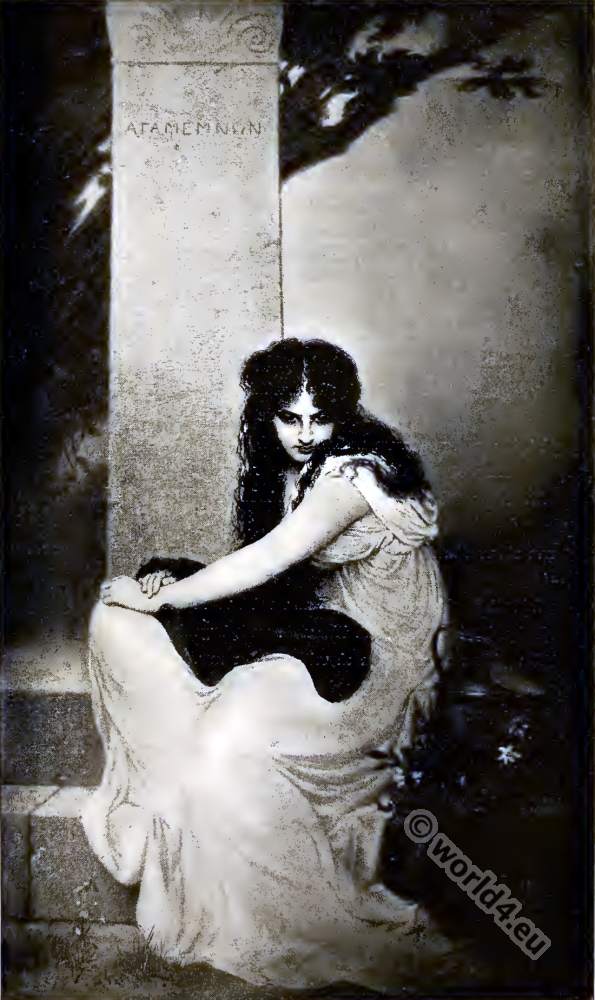Electra waits for the return of Orestes.
CLYTEMNESTRA having killed her husband, Agamemnon, marries Ægisthus. Electra, the daughter of Agamemnon and Clytemnestra, mourning the fate of her father, waits for the return of Orestes, her brother, as the avenger of his father’s death. Orestes, in order to deceive. Ægisthus sends a messenger to say that he has been killed at the Olympic games. As a proof of this report the messenger takes with hint an tint containing what are supposed to be the ashes of Orestes and gives it to Electra.
From the “Electra” of Sophocles we take Electra’s lament over the urn containing her brother’s ashes: “O monument of him dearest to me among mankind, relic of the living Orestes, with hopes how changed from those with which I once sent thee forth, do I receive thee back. For now bear thee in my hands, a nothing; but from thy home, my brother, I sent thee blooming forth. But now, far from thine home, and in a foreign land an exile, miserably hast thou perished, away from thy sister; nor with loving hands have I prepared the bath for thy body, nor from the all-consuming pyre borne away the hapless burden with accustomed rites. No, but cared for by stranger hands thou art come: a little weight in a little urn.
E. Teschendorff, Artist
Source:

